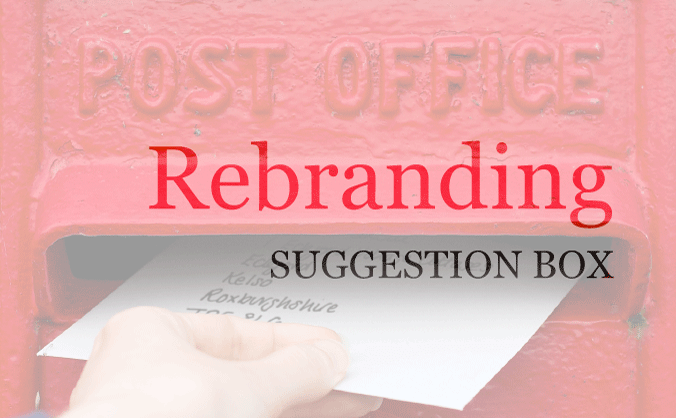
Thinking about rebranding?
Friday 26 January 2018
When we talk about rebranding we’re really talking about changing some or all of the ways that your business expresses its personality and values.

Friday 26 January 2018
When we talk about rebranding we’re really talking about changing some or all of the ways that your business expresses its personality and values.
At the end of last year I asked for suggestions of things you would like to read about on my blog. Sophie got in touch to ask about where she should start with revising her branding.
This month, in the first of two blog posts designed to answer Sophie’s question, I’m looking at what we mean by branding and the pros and cons of rebranding your business.
Before we can look at rebranding, we need to understand what branding is. Essentially branding is everything your clients and customers experience every time they encounter you. Most people think of branding as being synonymous with your logo, but it’s far wider reaching than that.
If you consider that your brand is the personality and values of your business, then your branding is everything that expresses and communicates that. If your business were a person, then it might be the things that they wear or the food that they eat. As a caricature, wearing a sharp designer suit and eating sushi suggests one sort of person. Wearing a hemp kaftan and eating falafel suggests someone quite different.
So, when we talk about rebranding we’re really talking about changing (and hopefully improving) some or all of the ways that your business expresses its personality and values. The benefit of doing this well is that your target market will be more likely to identify with your brand and understand that it is something they should be interested in.
Brand awareness is the first ‘rung’ on the sales ladder. Consistent use of your visual branding across a range of scenarios helps you to begin to be recognised. Someone might see your branding at a trade fair, in a magazine, on a website, and so on. Potential customers need to be exposed to your brand up to seven times before they remember it, so this is generally a long-term process.
Once customers have made a purchase – particularly if it is of high-value – then they will have a natural tendency to want to confirm to themselves that they made the right purchasing decision. They will focus on the benefits of the product or service that they selected, and will downplay any negatives in their mind. This cognitive bias is called ‘post-purchase rationalization’ and it means that clients will look more favourably on your brand once they have made a purchase. This is one of the drivers behind repeat custom with previous customers being much more likely to buy from you again because they have positively rationalized purchasing from you before.
If you change your visual branding then not only do you risk restarting the counter for potential customers who may just be beginning to recognise you, but you are also potentially severing the link with past customers who may no longer recognise or identify with your brand.
For these reasons, the general advice is not to change your branding unless you have a really solid business reason to do so.
In an ideal world businesses would achieve a perfect match between brand and branding from day one. In reality, businesses grow, develop and change. What might have been a great representation of your business on day one could feel like a total mismatch just six months on.
If your product or service has developed in an unexpected direction then you may now need to attract a different sort of client. This might mean that your branding needs to target a totally new demographic.
If you want to broaden your appeal to a new target market (even if you haven’t changed your product) then, again, you may need to change the way that you present yourself. A great example of this is Pukka Herbs. In 2006 they moved their range of teas from the herbal remedies shelf of independent health food shops to the mainstream tea shelves of national supermarkets thanks to the rebranding and repackaging work of The Space.
If your brand has been damaged, or negative associations have built up around it – for whatever reason – then rebranding might also be something to consider. This is something that Sellafield did when it changed its name from Windscale in 1981. Before you jump in, however, it’s important to remember the benefit of brand recognition, and unless the damage is major, there may be a way to achieve a positive outcome without rebranding. For example, demonstrating exceptional customer care and service in response to a problem can be extremely valuable for your brand.
Without a solid business reason, rebranding can simply become an expensive vanity project. And it can backfire, as GAP discovered in 2010 when they famously launched an extremely unpopular new logo replacing the design which they had used for twenty years. The backlash was enormous, and just six days later they reverted to the original design. Disaster averted, you might think. But consider the amount of time invested behind the scenes, the estimated $100million cost of the whole debacle, and the inevitable damage to the brand itself.
Next month I will be giving you some tips on how you might approach the process of updating or replacing your branding. Why not join my email list to make sure you don't miss it!
Recent posts
Featured posts

Hello! I’m Sarah, an independent typographic designer, helping businesses to communicate their unique selling points through printed marketing and communications.
I’ve been sharing my knowledge about design, typography, marketing, branding and printing since 2014. I hope you enjoy reading my blog.

Sarah Cowan